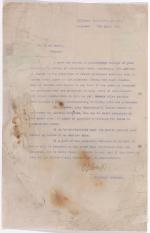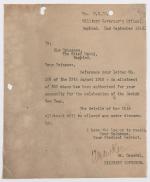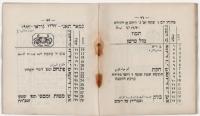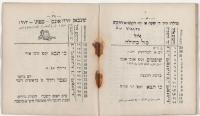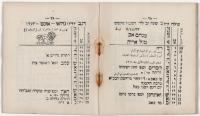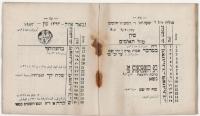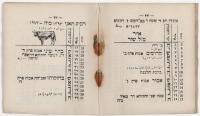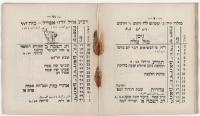
Bar Mitzvah in Baghdad, 1963 Courtesy of Maurice Shohet
The Jewish lunar calendar is strongly linked with the millennia of Jewish life in the region now called Iraq. The names of the months of the Jewish calendar have their origins in the ancient Babylonian calendar. A fixed calendrical calculation was finalized in the 10th century, largely by Saadia Gaon (882-942), the head of the renowned talmudic academy of Sura.
For generations, the celebration of festivals has shaped the patterns of Jewish life. In this region where Jews lived for thousands of years, the political rulers changed frequently—from the Sassanians of the talmudic era through the various leaders of the 20th century. Yet, the calendar cycle repeated itself each year, marking continuity for families and community.
Letter from the British Military Governor’s Office in Baghdad to the Chief Rabbi Regarding a Request to Provide Matzah to Jewish Prisoners during Passover, 1917
Learn More
Letter from the British Military Governor’s Office in Baghdad to the Chief Rabbi Regarding the Allotment of Sheep for Rosh ha-Shanah, the Jewish New Year, 1918
Learn More

Sefer Zikaron Tov: Seder Tefilah le-Rosh ha-Shana (Book of Good Remembrance: Order of Prayer for Rosh ha-Shanah)
Prayer Book
In many Jewish communities, a variety of symbolic foods, such as pomegranates and dates, are eaten in a home ceremony to usher in Rosh ha-Shanah, the Jewish New Year. Each food is accompanied by a prayer that this food will serve as a good omen for the year to come. This prayer book features the liturgy for Rosh ha-Shanah synagogue services as well as the text for this home ritual.
Learn More

Sefer Sipur Nes Hanukkah (The Book of the Story of the Miracle of Hanukkah) Baghdad, 1926
Hanukkah Book
The eight-day holiday of Hanukkah commemorates the rededication of the Temple in Jerusalem in the second century BCE. Festive Hanukkah celebrations in Iraq were marked by the eating of a local delicacy--fried sweet fritters known as zengoula. Local foods shaped the cuisine and traditions of Iraqi Jews..
Learn More

Haggadah, 1902
Haggadah
A Haggadah is a compilation of ancient discussions relating to the biblical account of the liberation of the ancient Israelites from slavery and their exodus from Egypt. One of very few Hebrew manuscripts recovered from the Mukhabarat headquarters, this Haggadah was hand-lettered and decorated by an Iraqi youth.
Learn More
Hebrew Calendars
After the invention of printing in 1440, Jewish communities worldwide prepared and distributed printed calendars to provide basic information regarding the dates of festivals and specifics, such as the time for sunset marking the beginning of the Sabbath each week.
The 19 printed calendars from 1959 to 1973 found in the intelligence headquarters’ basement are among the last examples of Hebrew printed items to be produced in Baghdad.
Learn More
Hebrew Calendar or Almanac for the year 5730 Baghdad, 1969-1970


